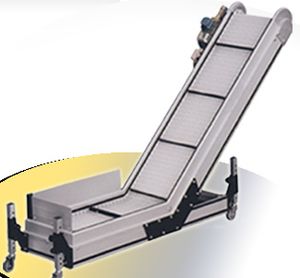Difference between revisions of "Plastic Conveyor Belts"
(Created page with "Category:Belt Conveying{{Knoppen}} <noinclude><!------------------------------------------------ * READ THIS FIRST * Only edit this page if you can improve the content. * Im...") |
|||
| Line 7: | Line 7: | ||
* Please start editing this page after the /noinclude | * Please start editing this page after the /noinclude | ||
* -------------------------------------------------></noinclude> | * -------------------------------------------------></noinclude> | ||
[[File:Plastic-conveyor-belt.jpg|thumb|right|Plastic Conveyor Belts]] | |||
'''Plastic Conveyor Belts''' have many advantages over conventional flat belt systems. These belts offer rugged yet flexible design features, which are increasingly used for food processing and conveying besides several engineering applications. | |||
As the name suggests the belts are made up of plastic modules arranged in staggered pattern assembled on full-length polymer hinge rods, which gives an inherent strength to the belt. The modules are held in place on the rods by end-locks. These belts are extensively used as a general purpose light duty as well as heavy duty belt for several applications including straight line conveying, inclined conveying, washing line applications, warmers and cooling tunnels.Plastic conveyor belts are manufactured using different base polymers depending on the induced requirements | |||
==Applications== | |||
* Magnetic separators | |||
* Recycling | |||
* Agricultural | |||
* Food processing | |||
* Package handling | |||
* Forest products | |||
* Mining | |||
* Roofing | |||
Latest revision as of 13:21, 20 August 2012
Plastic Conveyor Belts have many advantages over conventional flat belt systems. These belts offer rugged yet flexible design features, which are increasingly used for food processing and conveying besides several engineering applications.
As the name suggests the belts are made up of plastic modules arranged in staggered pattern assembled on full-length polymer hinge rods, which gives an inherent strength to the belt. The modules are held in place on the rods by end-locks. These belts are extensively used as a general purpose light duty as well as heavy duty belt for several applications including straight line conveying, inclined conveying, washing line applications, warmers and cooling tunnels.Plastic conveyor belts are manufactured using different base polymers depending on the induced requirements
Applications
- Magnetic separators
- Recycling
- Agricultural
- Food processing
- Package handling
- Forest products
- Mining
- Roofing
